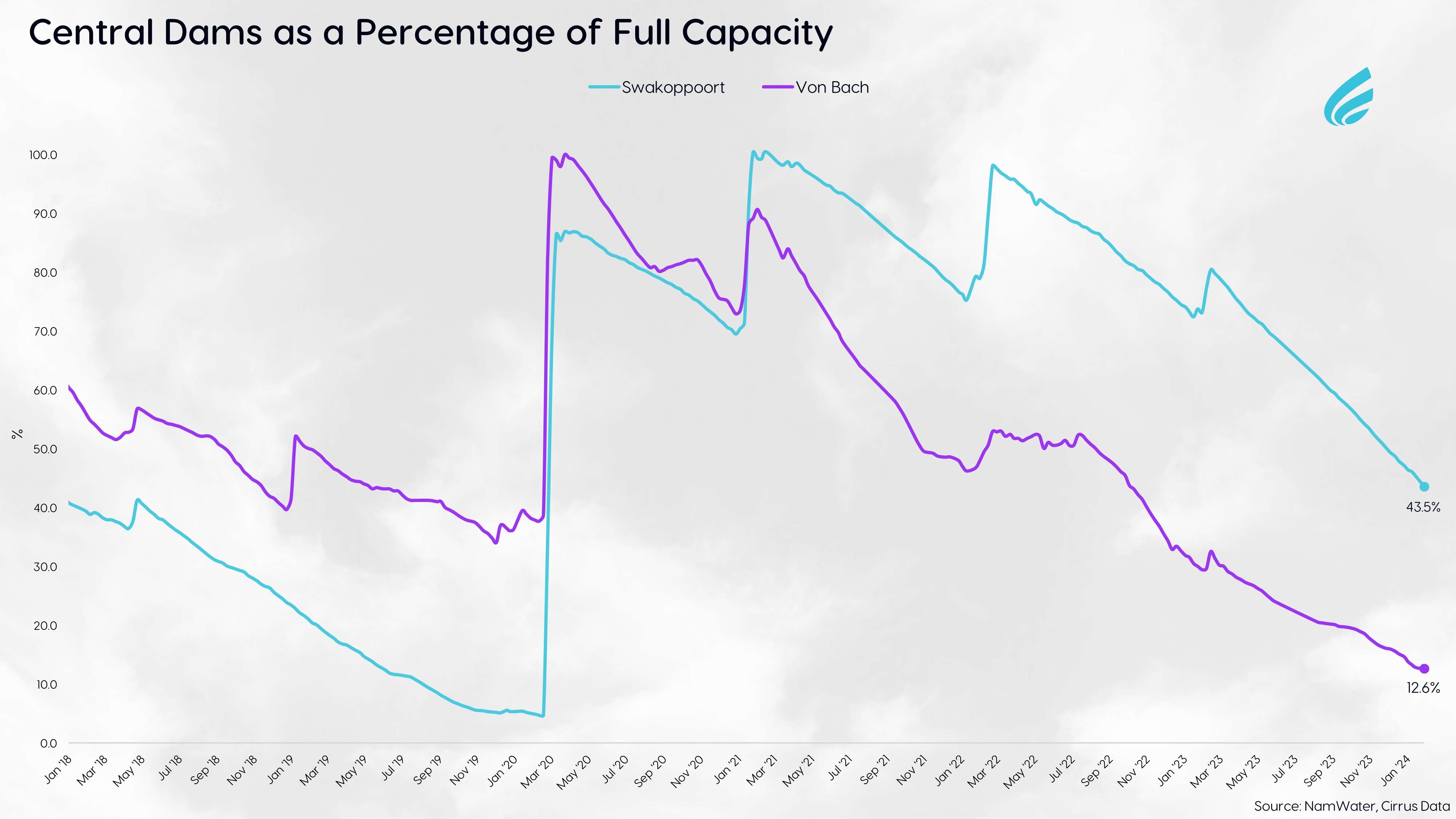Chart of the Week
Teaming up with Cirrus Capital, Market Watch will present the Chart of the Week every Monday starting today.
Namibia’s water availability and supply outlooks are pessimistic for (at least) the short-term, comments Tannan Groenewald, head of data and analytics at Cirrus, on this week’s chart.
At the end of January this year, Von Bach dam was at 12.6% capacity - the lowest it has been since January 2017 – while the Swakoppoort Dam levels continue to gradually decline.
NamWater has faced challenges transferring sufficient water from Swakoppoort to Von Bach, which means Windhoek will be increasingly reliant on drawing from the aquifer should the rainy season disappoint, Groenewald says.
Future risks
A similar situation was faced in early 2020 until rains in February resulted in rapid inflows and alleviated the challenge.
“While this may still happen, it is frustrating that the central areas face these concerns on a regular basis (increasingly so) with little done to reduce these risks in future. Ignoring the white elephant Neckartal Dam, the nation’s dam capacity has not materially changed since Independence, despite a growing population and increasing urbanisation,” he says.
“While water restrictions are necessary given current conditions, it must be asked what is being done and what will be done to ensure the central areas of Namibia do not face the same challenges repeatedly over the next decade,” Groenewald adds.
According to him, irrigation is also under threat with low water levels at the Hardap Dam. This means there are only a few more months available for full-capacity irrigation, whereafter water will be prioritised for residential and other use, he cautions.
Namibia’s water availability and supply outlooks are pessimistic for (at least) the short-term, comments Tannan Groenewald, head of data and analytics at Cirrus, on this week’s chart.
At the end of January this year, Von Bach dam was at 12.6% capacity - the lowest it has been since January 2017 – while the Swakoppoort Dam levels continue to gradually decline.
NamWater has faced challenges transferring sufficient water from Swakoppoort to Von Bach, which means Windhoek will be increasingly reliant on drawing from the aquifer should the rainy season disappoint, Groenewald says.
Future risks
A similar situation was faced in early 2020 until rains in February resulted in rapid inflows and alleviated the challenge.
“While this may still happen, it is frustrating that the central areas face these concerns on a regular basis (increasingly so) with little done to reduce these risks in future. Ignoring the white elephant Neckartal Dam, the nation’s dam capacity has not materially changed since Independence, despite a growing population and increasing urbanisation,” he says.
“While water restrictions are necessary given current conditions, it must be asked what is being done and what will be done to ensure the central areas of Namibia do not face the same challenges repeatedly over the next decade,” Groenewald adds.
According to him, irrigation is also under threat with low water levels at the Hardap Dam. This means there are only a few more months available for full-capacity irrigation, whereafter water will be prioritised for residential and other use, he cautions.





Kommentar
Allgemeine Zeitung
Zu diesem Artikel wurden keine Kommentare hinterlassen